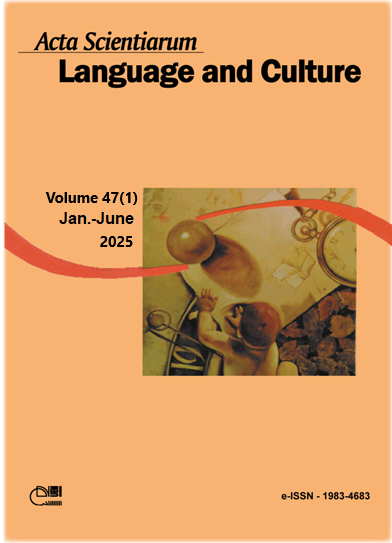Exploring ethnobotany as an expression of Balinese culture in Elizabeth Gilbert's Eat, Pray, Love
Resumo
This study explores the intersection of ethnobotany and literature, focusing on Elizabeth Gilbert's novel Eat, pray, love from an ecocriticism perspective. Ethnobotany, a multidisciplinary field, explores the connections between humans, culture, plants, and nature as a critique of Anthropocentrism. It highlights enriching relationships between humans and the natural world within diverse cultures and practices, offering solutions to modern environmental issues by redefining our use and perception of nature. The paper delves into the representation of Balinese culture depicted in Gilbert's novel, highlighting the profound connections between the local indigene and their natural environment, emphasizing practices related to traditional healing and rituals. The study analyses textual sources with a qualitative framework to comprehend the role of plants in Balinese culture and their significance in resisting external influences. The emphasis of this study is foregrounding the vital role of literature, particularly novels, in highlighting the interconnectedness between humans and nature by showcasing the cultivation of indigenous plants for medicinal purposes. By focusing on the narrative strategies delivered by Elizabeth Gilbert, it explores how ethnobotany philosophical implementation criticizes modernity and its detrimental impact on nature. To conclude, this paper contextualizes how local wisdom can propagate a sense of environmental consciousness in this Anthropocene Era.
Downloads
DECLARAÇÃO DE ORIGINALIDADE E DIREITOS AUTORAIS
Declaro que o presente artigo é original, não tendo sido submetido à publicação em qualquer outro periódico nacional ou internacional, quer seja em parte ou em sua totalidade.
Os direitos autorais pertencem exclusivamente aos autores. Os direitos de licenciamento utilizados pelo periódico é a licença Creative Commons Attribution 4.0 (CC BY 4.0): são permitidos o acompartilhamento (cópia e distribuição do material em qualqer meio ou formato) e adaptação (remix, transformação e criação de material a partir do conteúdo assim licenciado para quaisquer fins, inclusive comerciais.
Recomenda-se a leitura desse link para maiores informações sobre o tema: fornecimento de créditos e referências de forma correta, entre outros detalhes cruciais para uso adequado do material licenciado.




















6.png)









